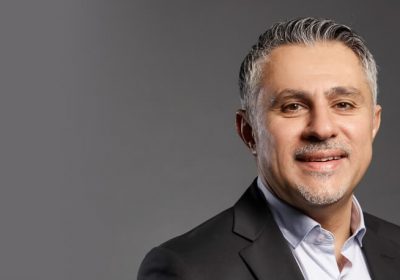
- Author: Alexandra Cain
- Posted: January 31, 2021
CFOs and insolvency experts need to work together for good business outcomes
By Alexandra Cain
The end of the temporary moratorium on trading while insolvent means it’s crunch time for chief financial officers of businesses with substantial debts. CFOs of the businesses that are trading with these entities also need to understand how best to engage with them.
A new provision was introduced on 1 January 2021 that allows small businesses with debts of less than $1 million to continue trading as long as they appoint restructuring advisers to help them engage with creditors and get their business back on track.
Wexted Advisors’ partner Andrew McCabe is among the advisers working with companies restructuring their operations under the new rules. McCabe says regardless of whether the business is appointed as a registered liquidator or a restructuring adviser, the first step is to understand the company’s affairs.
“This involves meeting the CFO and asking for information about the company’s financial position, financial performance and cash flow forecasts. After that, we meet to discuss the financials, capital raising activities and business drivers,” he explains.
According to McCabe, CFOs of his clients typically have one of three different initial responses. The first group is those who are relieved to be working with Wexted Advisors.
“The CFO has usually been working with limited capital, dealing with creditor demands, cutting costs and managing working capital as best as they can to allow the business to continue to trade. The appointment of a liquidator is initially met with relief from the CFO, who can now hand over pending legal actions, bank, tax and other creditor demands and calls for payment, to the liquidator,” he explains.
Surprise is the second, less common, reaction CFOs have, says McCabe. “This usually happens if a director retains control of the business. The CFO may not have full transparency over operations and creditor payments. This is worrying for an incoming liquidator.”
Distrust is the third, and common, reaction CFOs have. “The CFO is uncertain about the process, his or her ongoing employment and the liquidator’s initially-unknown intentions. With their own and the directors’ powers suspended, CFOs will question why certain information is requested and the purpose and use of this information. The CFO will be mindful about whether the information will incriminate him or herself, the CEO or a director,” he adds.
In most cases, the CFO will feel obliged to update and finalise journal entries and reconcile the accounts to accurately reflect the company’s financial position at the date of liquidation. This is in contrast to the liquidator’s more immediate priority, which is to decide whether to implement an immediate hard close to the accounts, to understand whether the company will remain trading on the day of appointment or close immediately.
Says McCabe: “So what the liquidator needs on the day of appointment is a 12-week cash flow forecast so a decision can be made about whether the company can be sold as a going concern. The CFO and the finance team will be instrumental in getting the liquidator and its staff up to speed with the business and producing a realistic and conservative cash flow forecast.”
Keep in mind the liquidator is personally liable for any debts incurred from the date of appointment, if the company is allowed to keep trading. Although many companies are closed immediately after the liquidator’s appointment, with the business and its assets sold if possible.
Tips for CFOs of wound-up companies
In many cases, the CFO will have been instrumental in establishing, building and trying to save the business, investing substantial time and effort into it over an extensive period. Even so, it’s important to try to be emotionally detached.
“The liquidator will view the business through a perspective of realisations for creditors and this may come across as unemotional,” says McCabe.
It’s important for the CFO to immediately give the liquidator access to any cloud-based accounting systems. This will save countless requests for financial reports, creditors’ names and employee entitlement details, among other things.
At this stage, the CFO should explore whether the business is eligible to access the Fair Entitlements Guarantee (FEG) to support employees being made redundant. FEG is the federal government’s safety net of last resort for employees who have been made redundant, through which they can claim unpaid wages and other benefits. To qualify, the company must have more than 15 employees at the time of the redundancies. The CFO may also be able to access entitlements through FEG.
The CFO perspective in a liquidation scenario
Some CFOs may soon receive restructuring proposals from customers who have been working with advisers to get their house in order under the new rules that came into effect at the start of the year. It’s likely the proposals will offer to settle company debts for a cents-in-the-dollar return over a defined period.
“Aside from needing to consider how to respond to such proposals, CFOs in this position will need to move quickly to consider amending the customer’s terms of trade and credit limits. This will allow them to manage working capital and protect against additional write-offs, all while balancing the needs of achieving the sales budget,” McCabe says.
Working effectively with advisers
The appointment of a restructuring practitioner with experience navigating the safe harbour provisions allows the board and the CFO to take a breath and consider their options. The adviser is there to assist the CFO and the board, document the restructuring plan and, where required as the independent party, work with stakeholders to win their trust and support for the restructuring plan, even if this comes at a discount to the face value of their debt.
With the board’s consent, the adviser can work with auditors and other parties to assist CFOs to manage competing interest and enhance the chances of the company’s survival.
Says McCabe: “Leadership from the board and executive is critical, especially when it comes to guiding the staff into the new world. A rational and logical approach is required, with targeted communication and realistic work expectations. This may be temporarily at the expense of other business-as-usual tasks.”
Outside the office, exercise, a good diet and stable personal life will help CFOs to achieve the required mental fitness for the restructuring process. “Blue skies will be ahead despite current dark clouds,” he adds.
The CFO must also realise the new territory will be different and he or she will need to work with advisers to build a new corporate world. This includes staying abreast of new regulations, the marketplace and economic implications regarding insolvency laws and COVID-19 measures.
“Other challenges may include reworking the cash flow model and devising different budget scenarios. Brainstorming scenarios is essential and the guidance advisers can provide on this journey is comforting and may provide a robust path to the future,” says McCabe.
He notes this process will change the CFO’s peer interactions and require hard questions to be answered. “Resilience and following the agreed roadmap is key,” he adds.
The end game
The business may be reborn in a different format, which can be refreshing and an opportunity to move away from previously unprofitable work, product lines or services.
Downsizing, relocations, redundancies and fire sales could be part of the process and maintaining a healthy outlook is critical for the CFO, his or her peers and the business, says McCabe.
“The worst-case scenario could be the closure of the business if key stakeholders don’t support the restructuring plan. What’s essential is to maintain a professional manner and learn from the experience. Your future will depend on the equity in your personal brand. So don’t burn your bridges and face each new day with optimism,” he recommends.








